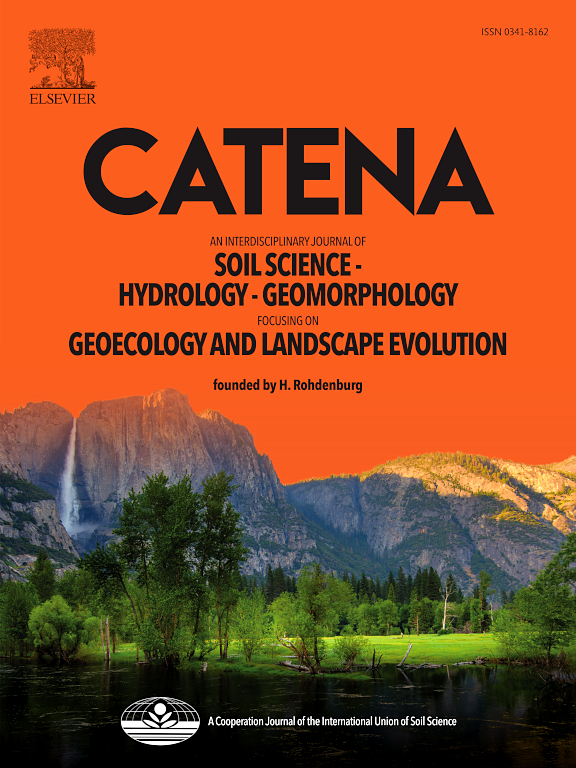Aggregation of tropical urban soils in the metropolis of São Paulo, southern Brazil
IF 5.4
1区 农林科学
Q1 GEOSCIENCES, MULTIDISCIPLINARY
引用次数: 0
Abstract
This study investigated the interplay between the mechanisms of natural soil formation and human-induced alterations in tropical urban soils in São Paulo, Brazil, in order to understand soil dynamics, which are crucial for sustainable urban soil management. Through comprehensive field surveys and laboratory analyses, three soil pedons from Villa Lobos Park (São Paulo city), which was inaugurated in 1994, were studied. To carry out the research, morphological, chemical, physical and micromorphological analyses, as well as aggregate scanning, were conducted. A correlation matrix was created for each pedon to statically analyze the data. The results revealed that the soil composition and aggregation dynamics in Villa Lobos Park were influenced by both natural pedogenic processes and anthropogenic interventions. Over three decades, organic carbon enrichment from root decay and grass biomass decomposition has improved soil quality through melanization. Additionally, inherited organic matter (OM) amounts from technogenic deposits and deliberate OM additions during the establishment of the park have enhanced the organic content near the soil surface. Also, calcification is present. Aggregation dynamics are governed by factors such as aromatic humus, polysaccharide polymers, the synergistic action of fauna and roots, and facilitated by the wetting–drying cycles of the tropical climate and the abundance of cations, notably Ca2+. Rapid macroaggregate formation driven by the wetting–drying cycles and the extensive root networks was observed, combined with slower microaggregate development facilitated by the interaction of polysaccharides and organic-minerals complexes. Anthropogenic inputs, including clayey layers, construction residues, organic matter supplements, earthworm populations, and grass cultivation, significantly shaped soil aggregation dynamics, accelerating pedogenic transformations and improving the overall quality of the soil within the park. Understanding these dynamics is crucial for sustainable soil management in urban green spaces like the Villa Lobos Park, offering insights into effective conservation and restoration strategies in similar urban environments worldwide.
求助全文
约1分钟内获得全文
求助全文
来源期刊

Catena
环境科学-地球科学综合
CiteScore
10.50
自引率
9.70%
发文量
816
审稿时长
54 days
期刊介绍:
Catena publishes papers describing original field and laboratory investigations and reviews on geoecology and landscape evolution with emphasis on interdisciplinary aspects of soil science, hydrology and geomorphology. It aims to disseminate new knowledge and foster better understanding of the physical environment, of evolutionary sequences that have resulted in past and current landscapes, and of the natural processes that are likely to determine the fate of our terrestrial environment.
Papers within any one of the above topics are welcome provided they are of sufficiently wide interest and relevance.
 求助内容:
求助内容: 应助结果提醒方式:
应助结果提醒方式:


